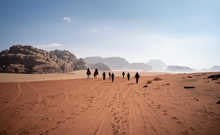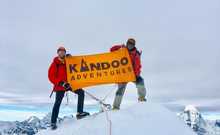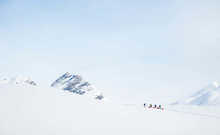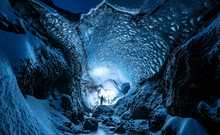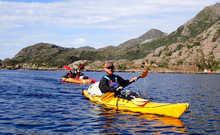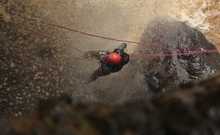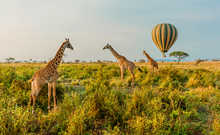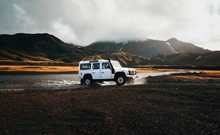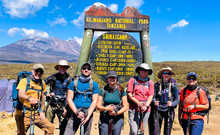Records Set on Mount Everest
Standing at an immense 8,849m tall, Mount Everest is the highest point on Earth and reaching its summit is a symbol of human endurance, ambition and courage. For over a century, climbers and peak-baggers from around the world have tested their limits against its unforgiving slopes and extreme altitude to stand at its awe-inspiring summit.
From the first to climb Mount Everest to the individual who has climbed Mount Everest the most, this epic peak has been the stage for some of the most astounding feats in mountaineering history. Below, we’ve gathered 10 remarkable records set on Mount Everest to ignite your passion for adventure.
1. First to climb Mount Everest - Tenzing Norgay Sherpa and Sir Edmund Hilary (May 29, 1953)
The first people to summit Mount Everest were Nepali Sherpa
Tenzing Norgay and New Zealand’s Edmund Hillary on 29 May 1953 on the 9th
British Expedition to Everest led by Colonel John Hunt.
The massive 1953 British expedition that placed Norgay and
Hillary on the top included 350 porters, 20 sherpas and only 10 climbers. Tenzing
Norgay was the leader of the team of sherpas on the expedition, and this was
his 7th summit attempt. Hunt did not reach the summit himself, but
his planning enabled Edmund Hillary and Sherpa Tenzing Norgay to successfully
conquer the highest point on earth for the first time on this record-breaking
expedition.
In the early hours of 29 May 1953, Tenzing and Hillary began
the expedition’s second summit attempt, battling through snow along the exposed
ridgeline towards the peak. The pair had reached the South Summit by 9am and
the highest point at 11:30am.
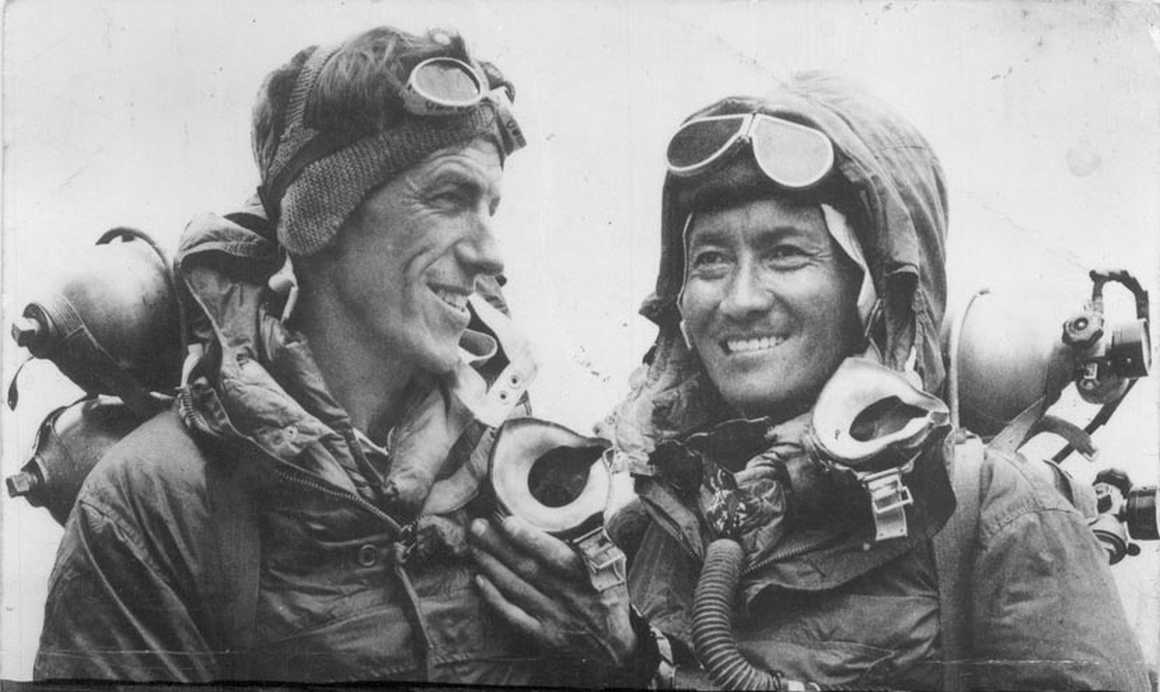
Photo Credit: http://www.tenzing-norgay-trekking.de
2. First woman to climb Mount Everest - Junko Tabei (May 16, 1975)
In 1975, Japanese climber Junko Tabei became the first woman to summit Mount Everest. As just the 36th person ever to climb the mountain, Tabei’s incredible achievement made her a global celebrity and secured her a place in the history books.
After graduating from university, Junko Tabei joined several male-dominated mountaineering clubs and later founded the Joshi-Tohan Club (Women’s Mountaineering Club) in 1969, the first of its kind in Japan. The club’s first trip saw the team summit Annapurna III, becoming the first female and first Japanese team to do so. Next, the club decided to climb Mount Everest. They applied for a permit in 1971 but didn’t receive permission to climb the peak until four years later in 1975.
The 1975 Joshi-Tohan expedition began without issue, but disaster struck when the team - 15 women and 6 Sherpa guides - were camped at 6,300 meters. An avalanche swept through their tents, burying Junko Tabei and four other climbers. When Tabei was finally pulled from the snow, she was unconscious and barely able to stand. After recuperating for just two days, Tabei resumed the expedition. Due to a lack of supplemental oxygen, only one woman was able to attempt the summit. Tabei’s teammates nominated her, and she reached the summit on 16 May 1975.
3. First woman from Nepal to climb Mount Everest - Pasang Lhamu Sherpa (April 22, 1993)
On April 22, 1993, 32-year-old Pasang Lhamu Sherpa became the first Nepali woman to summit Mount Everest. This came after three failed summit attempts, which only made her more determined to conquer the tallest peak in the world.
After reaching the top of the 8,848m peak on her fourth attempt, she descended the mountain with five other Sherpas when weather conditions dramatically deteriorated. A huge snowstorm swept in, and the team ran out of oxygen. Tragically, Pasang and one of her fellow climbers, Sonam Tshering Sherpa, never made it down alive.
The mother of three was posthumously honoured by her country and she became the first woman to be decorated with the Nepal Star by the King of Nepal.
4. First to climb Mount Everest without supplementary oxygen - Reinhold Messner and Peter Habeler (May 8, 1978)
On May 8, 1978, Reinhold Messner and Peter Habeler became the first to climb Mount Everest without supplemental oxygen. At the time, many experts thought the human body wouldn’t be able to cope with the low oxygen levels, making this a monumental achievement in the world of extreme altitude.
Two years later, Messner returned to Everest to attempt to be the first person to climb Everest solo without supplementary oxygen. A goal that he achieved on August 20, 1980. He also undertook this climb with no support, no team to assist him, no backup in case of problems and carried all his own gear.
After climbing Everest solo without any supplementary oxygen, Messner went on to become the first person to climb all the world’s 14 peaks over 8,000m and he holds 9 Guinness World Records for his epic achievements.
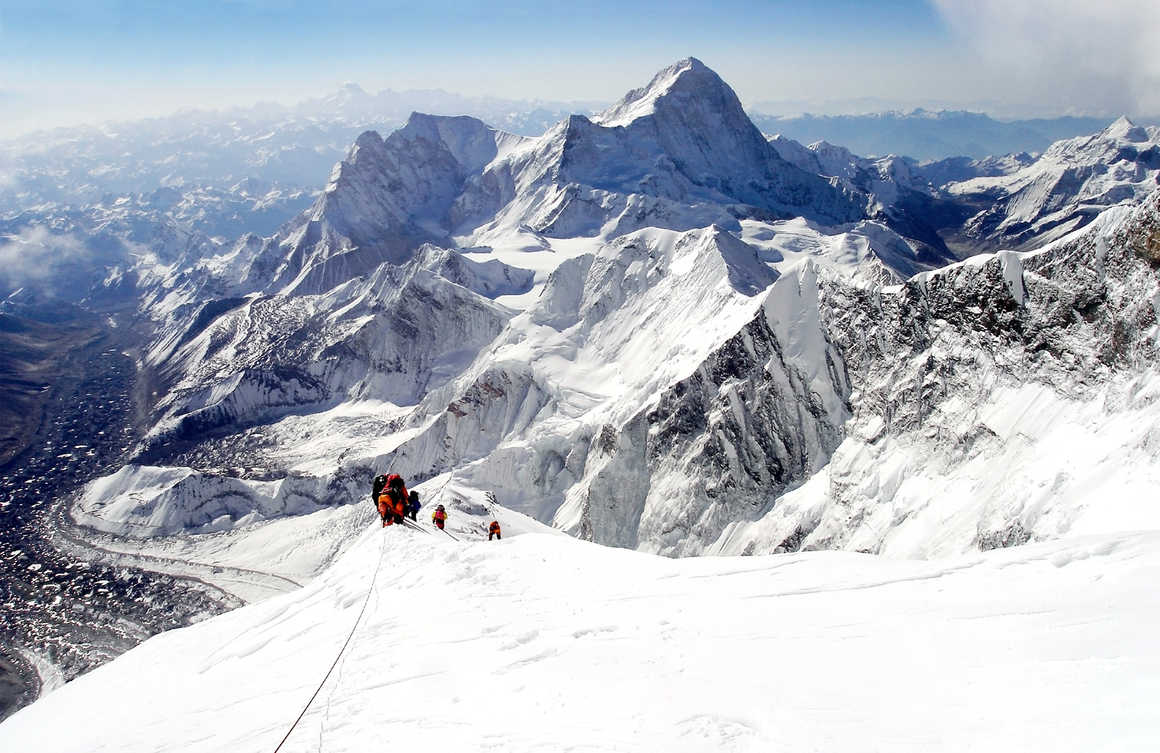
5. Quickest time to climb Mount Everest - Lakpa Gelu Sherpa (10 hours, 56 mins)
The fastest ascent of Everest is 10 hours 56 minutes 46 seconds and was achieved by Lhakpa Gelu Sherpa on May 26, 2003. This record, however, was initially disputed by Pemba Dorje Sherpa who claimed a faster time but ultimately had his claim invalidated by the Nepalese Supreme Court and the Guinness World Record officially recognises Lakpa Gelu Sherpa’s time.
The debate started in May 2003 after Pemba Dorje Sherpa claimed a time of 12 hours 45 minutes. Then three days later, Lakpa Gelu Sherpa recorded a verified time of 10 hours and 56 minutes on the same route. The following year Dorje Sherpa returned and said he climbed it in 8 hours and 10 minutes, but it has been debated for 14 years because he couldn’t prove his ascent.
6. First uninterrupted snowboard descent - Marco Siffredi (2001)
In 2001, Marco Siffredi set the record for the first uninterrupted snowboard descent from Mount Everest. After summitting Everest on foot, Siffredi began a non-stop descent on a snowboard. His preferred route down Hornbein Couloir didn’t have enough snow, so instead he rerouted down the Norton Couloir to base camp in approximately 2 and a half hours.
He returned in 2002 to attempt the Hornbein Couloir, the steepest route on Everest. Conditions were considerably worse the second time around and the sherpas reportedly warned Siffredi not to begin the descent, but he set off with one oxygen tank strapped to his back at around 3pm. It was the last time he was ever seen. While nobody knows exactly what happened, it’s possible an avalanche could have swept the experienced snowboarder away. There are also sheer drops around the area where he was snowboarding.
Siffredi’s feat has only been challenged by Stefan Gatt, who was actually the first person to reach the summit with a snowboard. However, his descent was interrupted by unfavourable conditions that forced him to complete part of the descent on foot.
7. Most summits of Everest - Kami Rita Sherpa (31 times)
At 04:00 am on 27 May 2025, 55-year-old mountain guide Kami Rita Sherpa successfully reached the summit of Mount Everest for the 31st time in his mountaineering career. He completed his first climb of Everest on 13 May 1994, aged 24, and has scaled it nearly every year since (some years, such as 2023 and 2024, twice), when it has been permitted. Breaking his own record, this ascent marks the Guinness World Record for the most Everest summits.
Right now, the closest competitor to Kami Rita’s Guinness World Record is Pasang Dawa Sherpa, a fellow Nepali guide who recently reached the top of Everest for the 29th time.
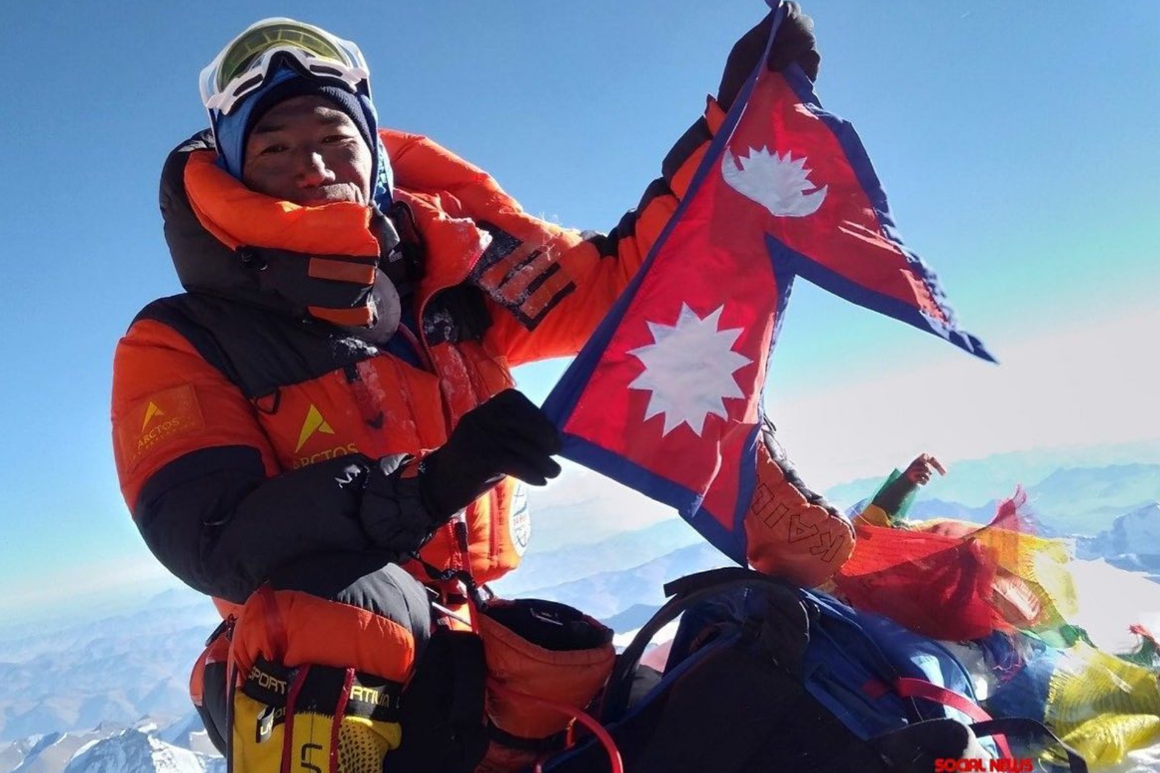
8. Youngest person to climb Mount Everest - Jordan Romero (age 13)
Jordan Romero is an American boy born July 12, 1996. He is the youngest person to climb to the summit of Mount Everest on May 22, 2010, when he was just 13 years 10 months and 10 days old.
9. Oldest person to climb Mount Everest - Yuichiro Miura (age 80)
The oldest man to ascend Mount Everest is Yuichiro Miura from Japan, who reached the summit on May 23, 2013 at the age of 80 years old. On his descent, he was helicoptered from Camp 2 to Kathmandu.
This is the third time that he has held this record, previously reaching the highest point on Earth as the world’s oldest summiteer in 2003 and again in 2008.
10. Longest stay on Mount Everest - Bhakta Kumar Rai
Bhakta Kumar Rai, 30-year-old Nepali guru, holds the record for the longest stay on Everest’s summit in 2011. He reportedly stayed remained at the summit for 32 hours, 27 of which were in meditation and 11 without any supplementary oxygen, reaching the top at 5:30am and remaining there until 1:00pm the next day.
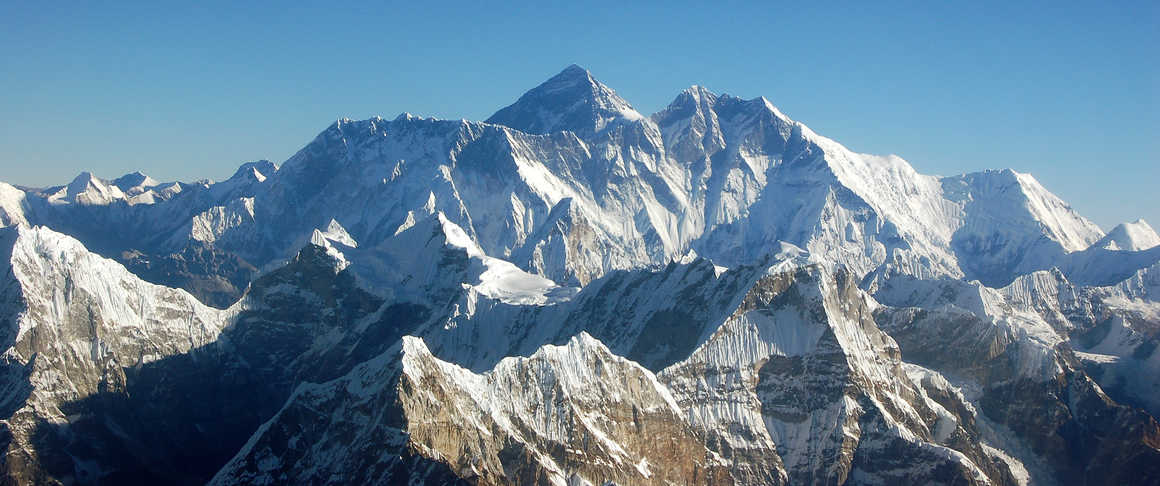
Today, there are increased concerns over the ethics and sustainability of climbing to Mount Everest summit, and reaching its summit is not feasible for most. But you don’t need to stand at the world’s highest point to appreciate the immense beauty of the Himalayas. Trekking in Nepal’s foothills, beneath some of the world’s few mountains over 8,000m tall, is an unforgettable experience in itself.
Kandoo offer adventurers a choice of route to Everest Base Camp. Some follow a more scenic route such as the Gokyo Lakes Everest Base Camp trek, others summit nearby peaks such as Mera Peak and Island Peak as well as the iconic Everest Base Camp route. Unlike climbing Mount Everest, which requires specialised equipment, training and support, trekking to Everest Base Camp is achievable for most with determination and the right mindset.
Get in touch with the helpful team at Kandoo HQ to plan your next adventure in Nepal.
